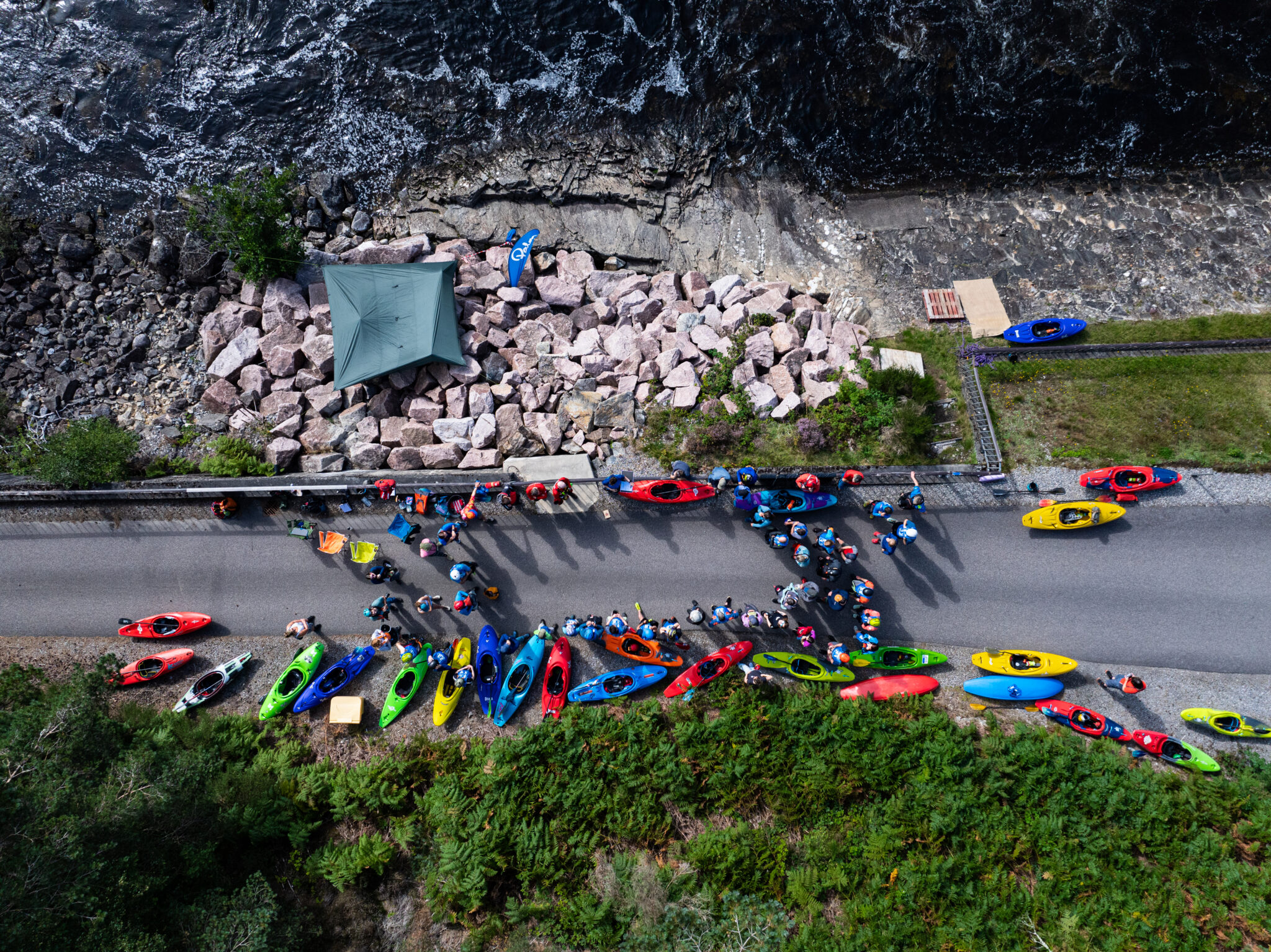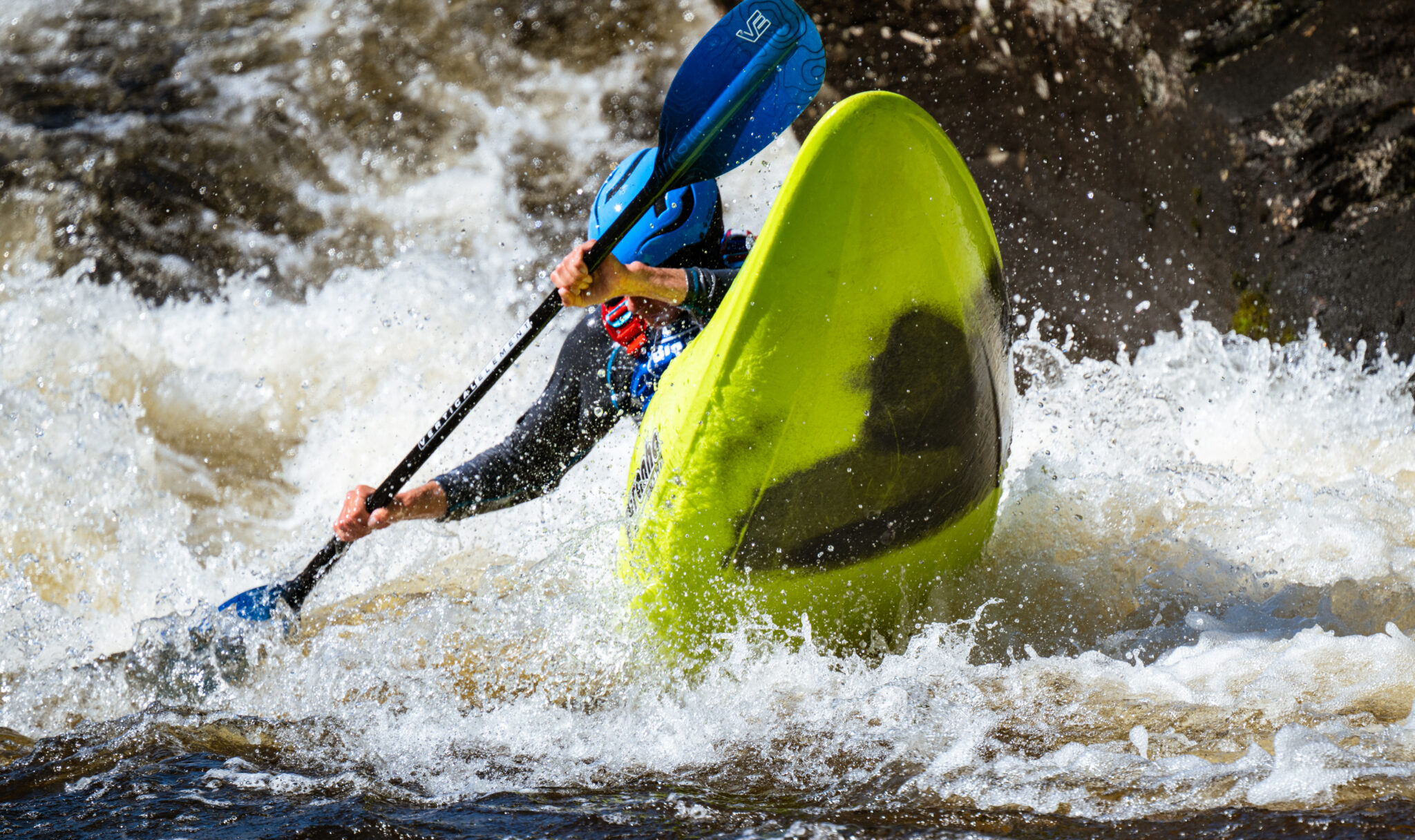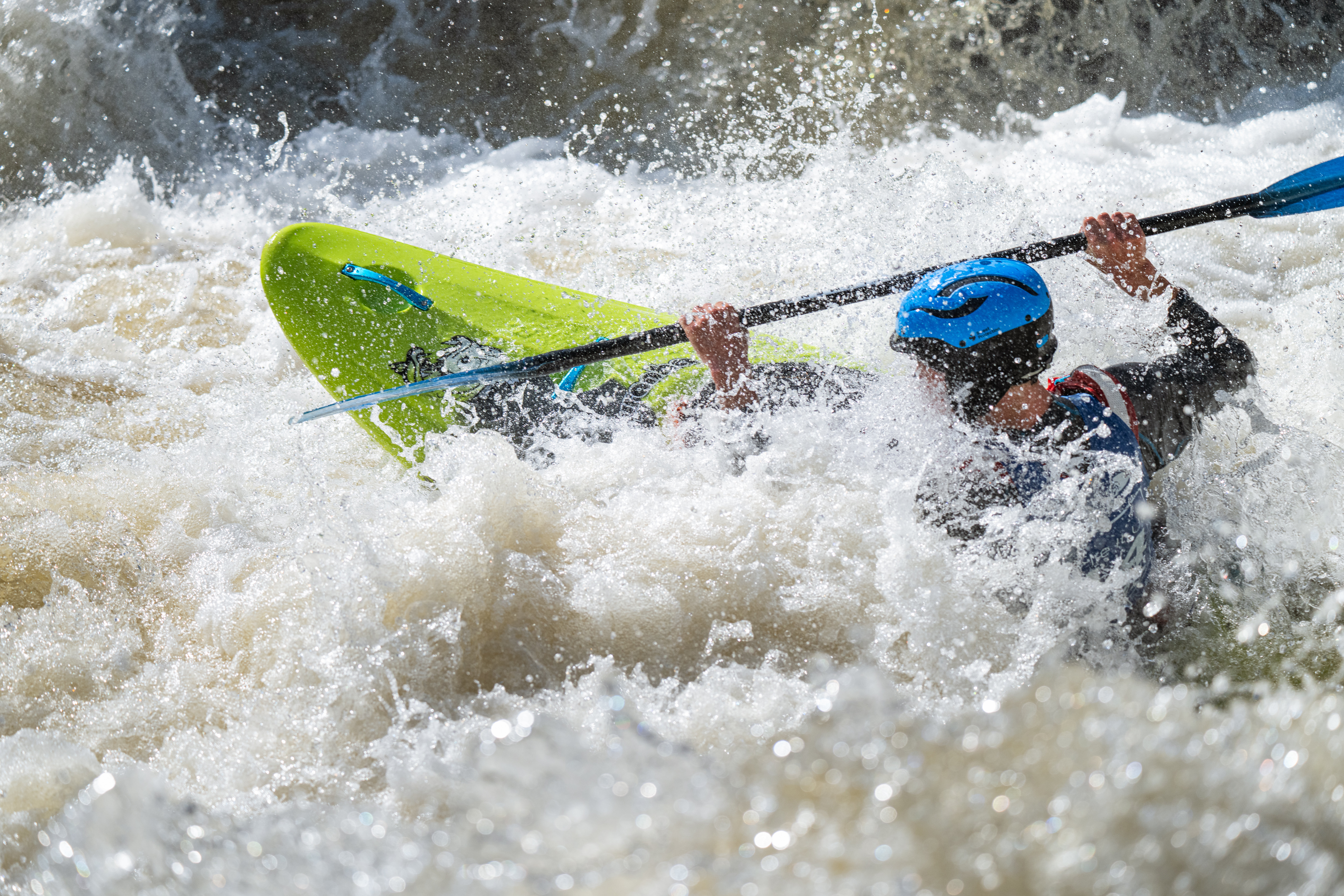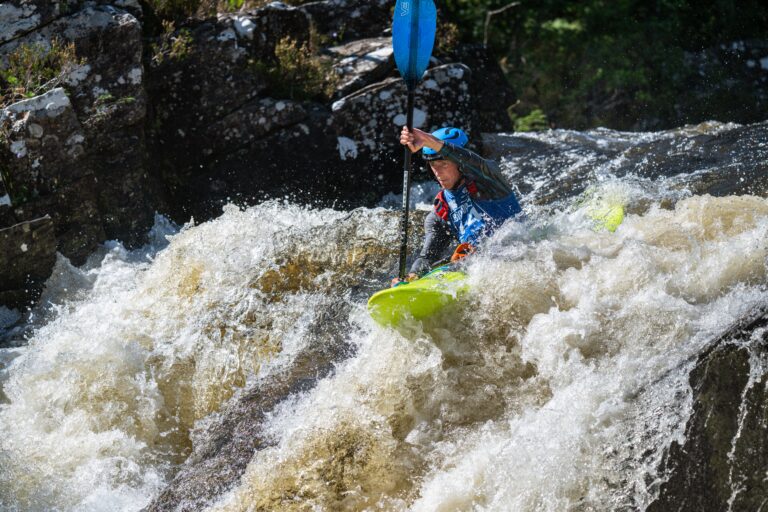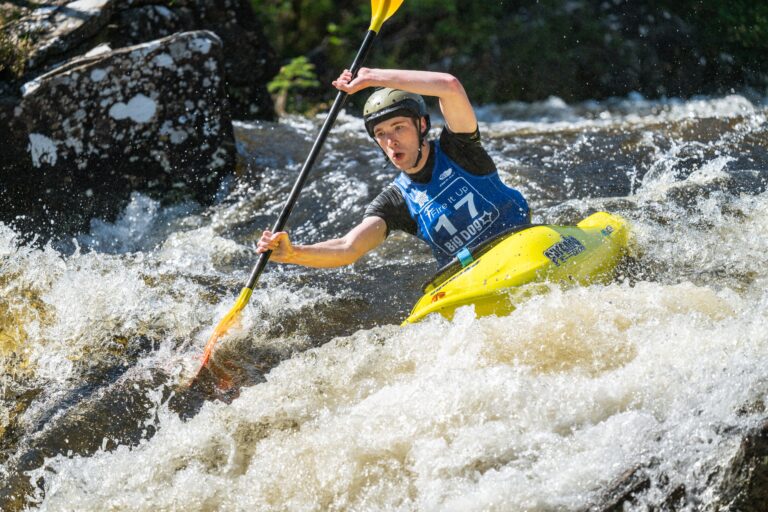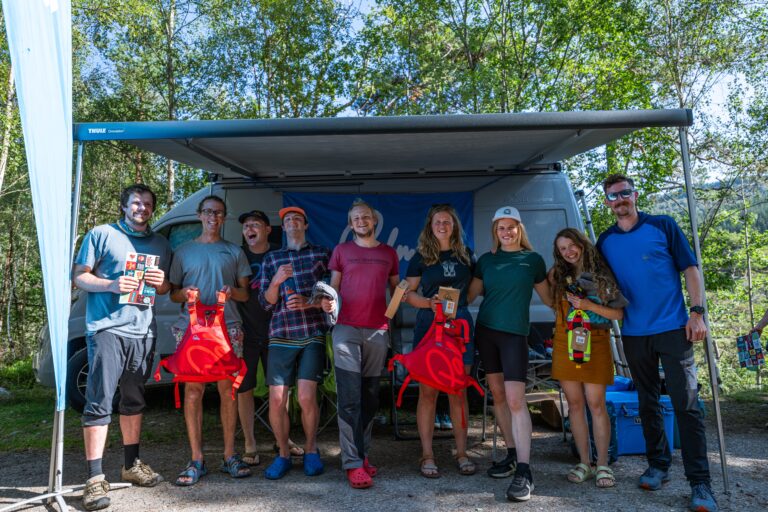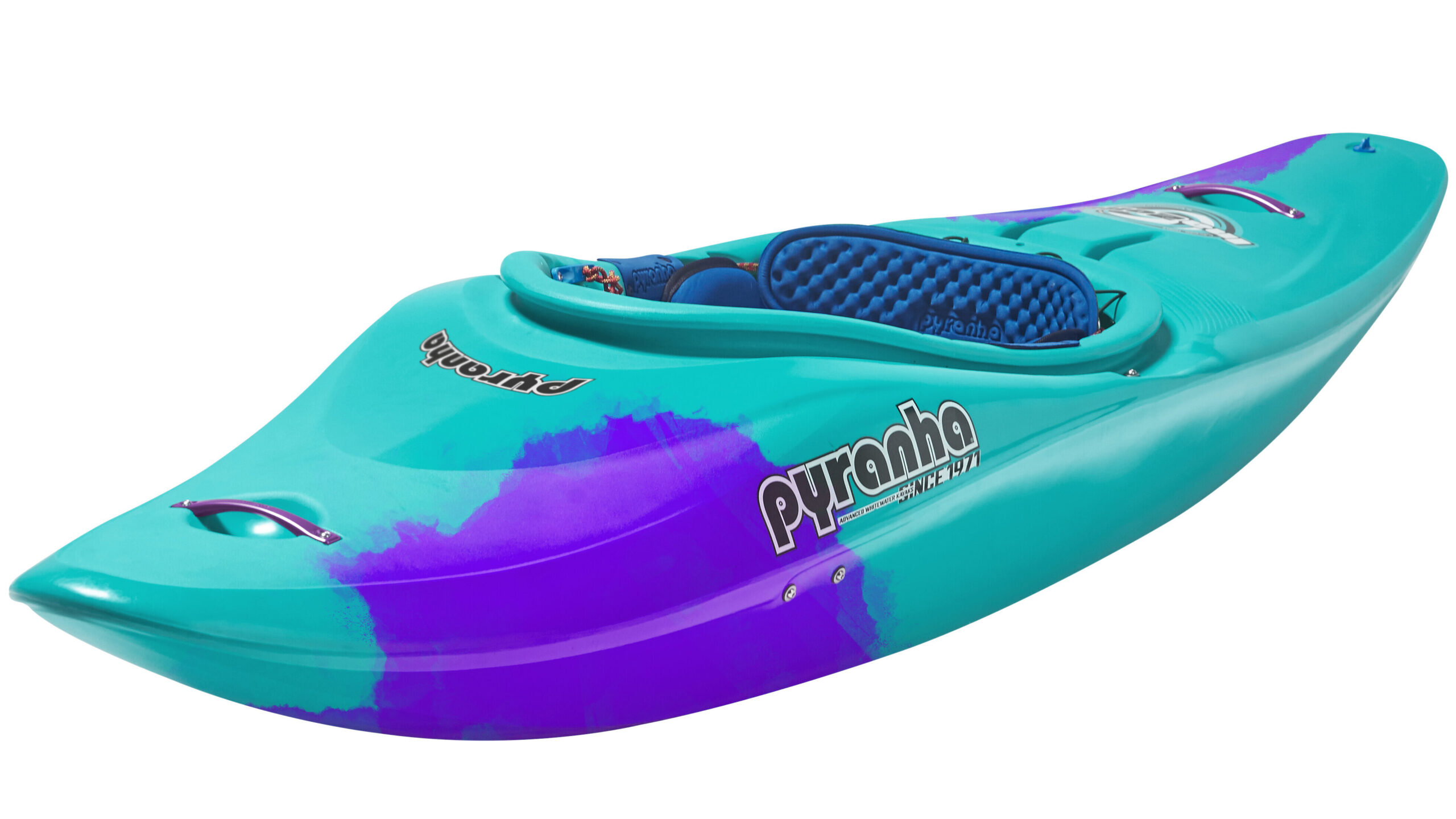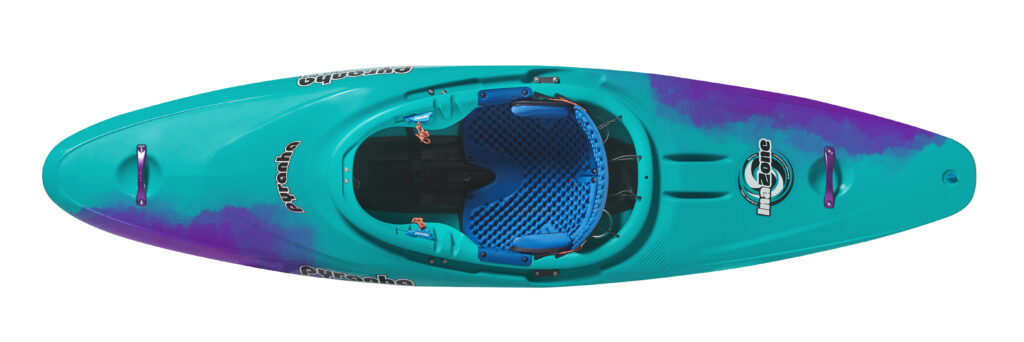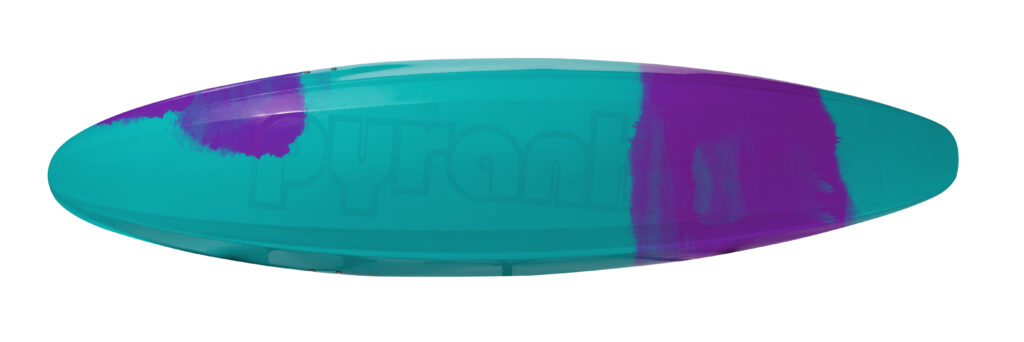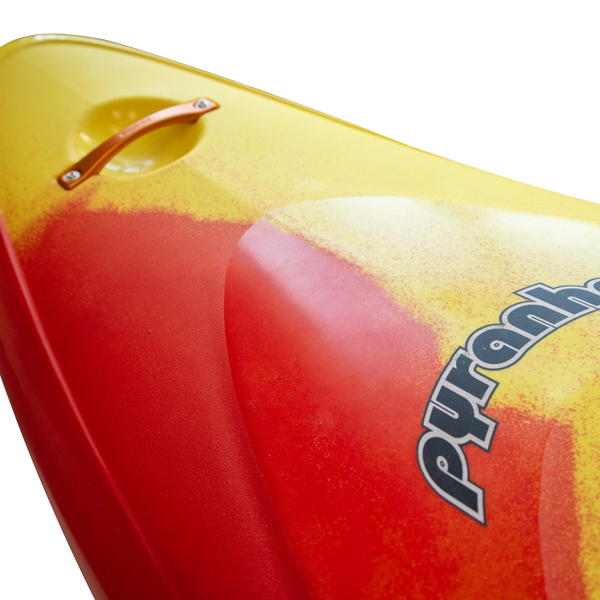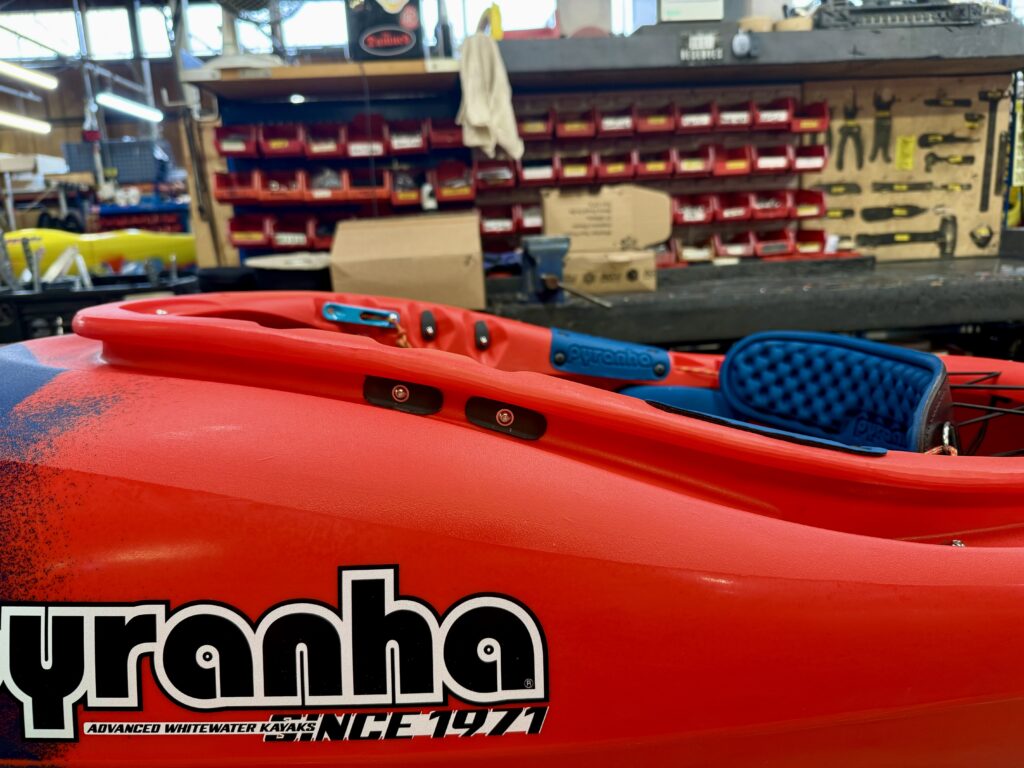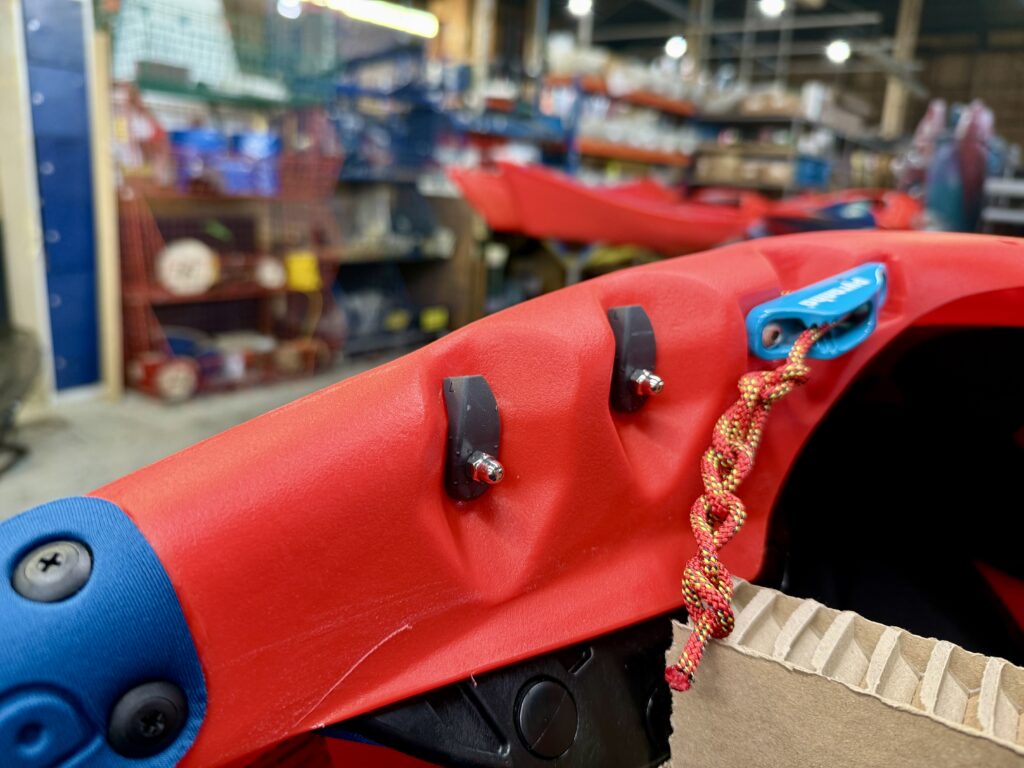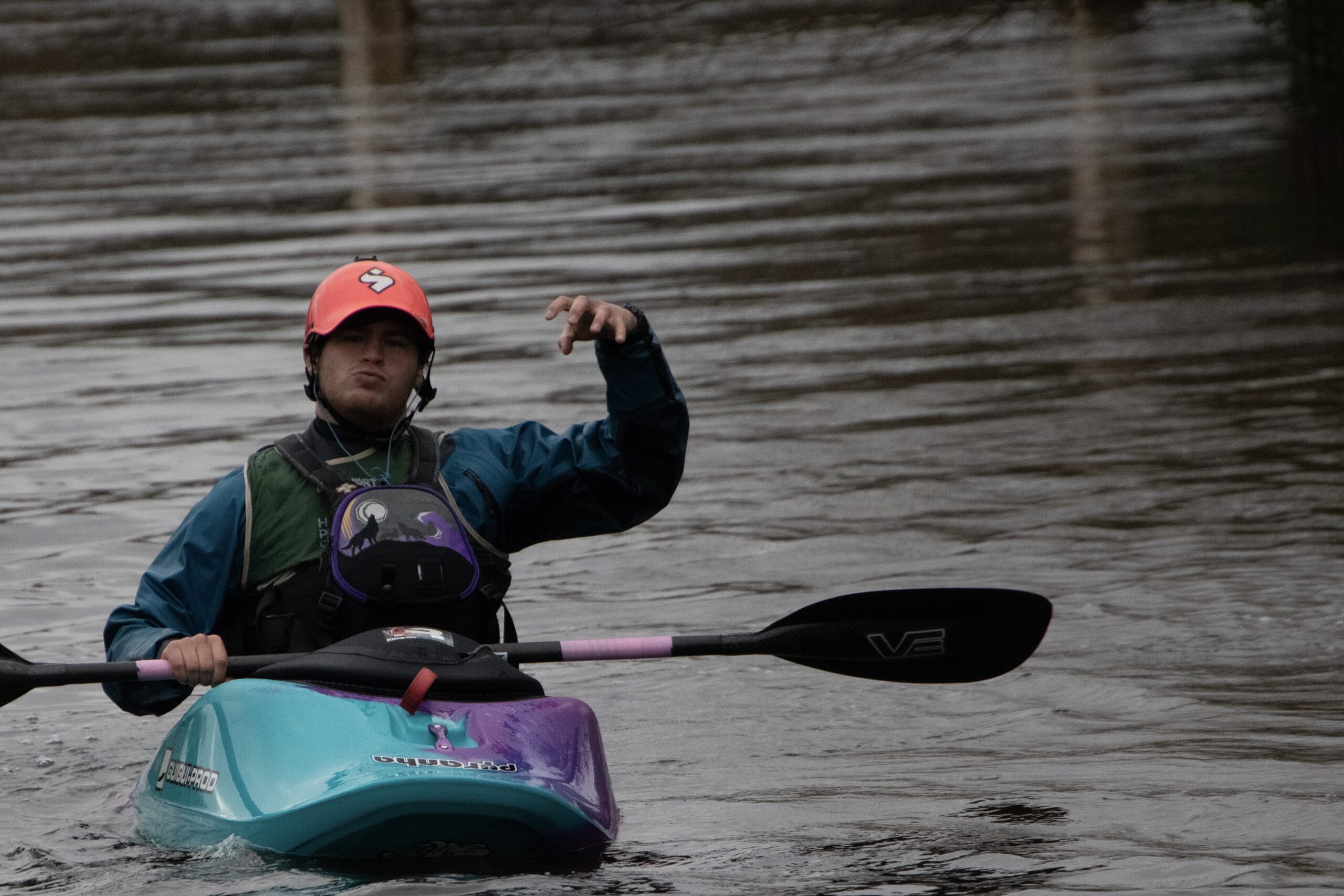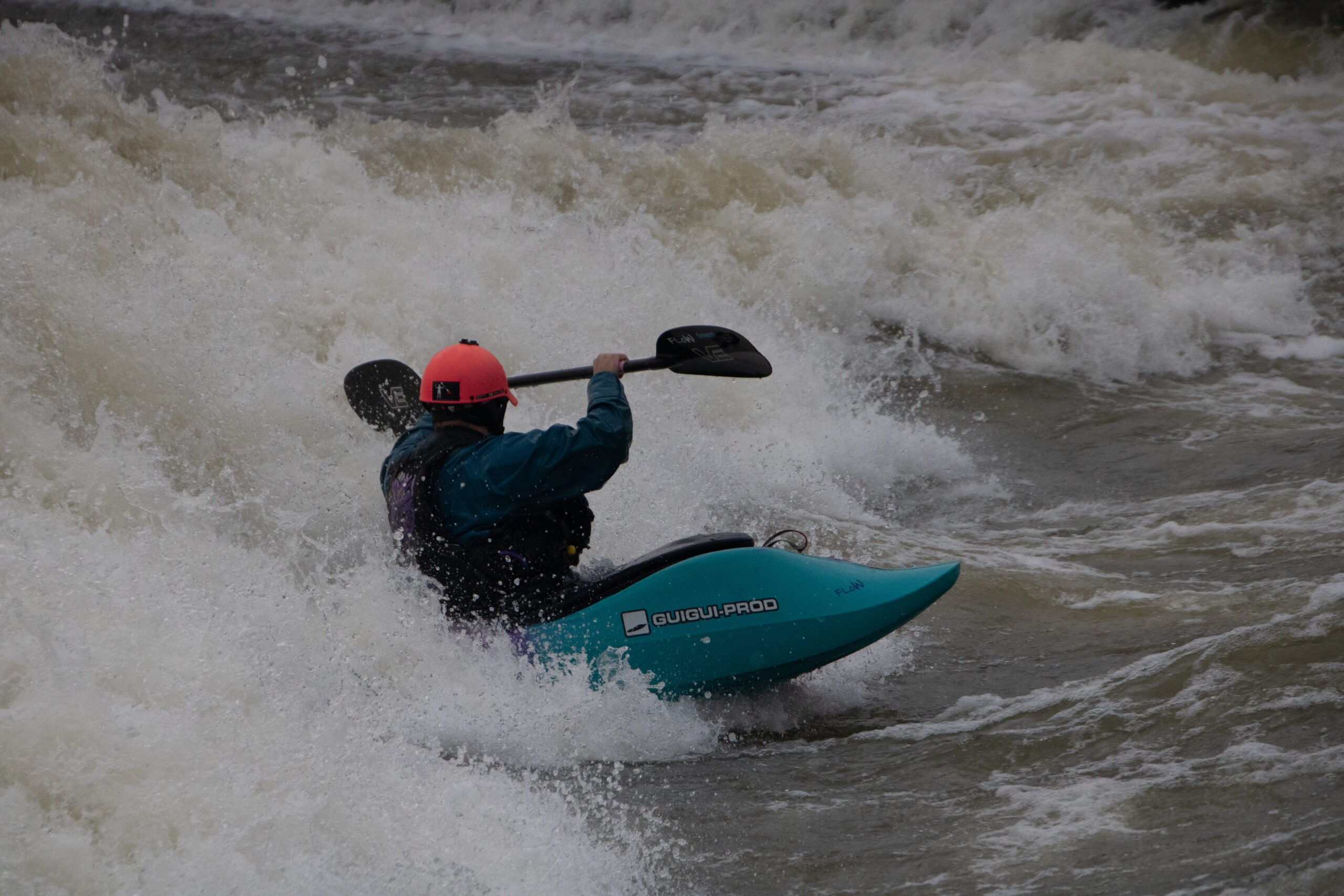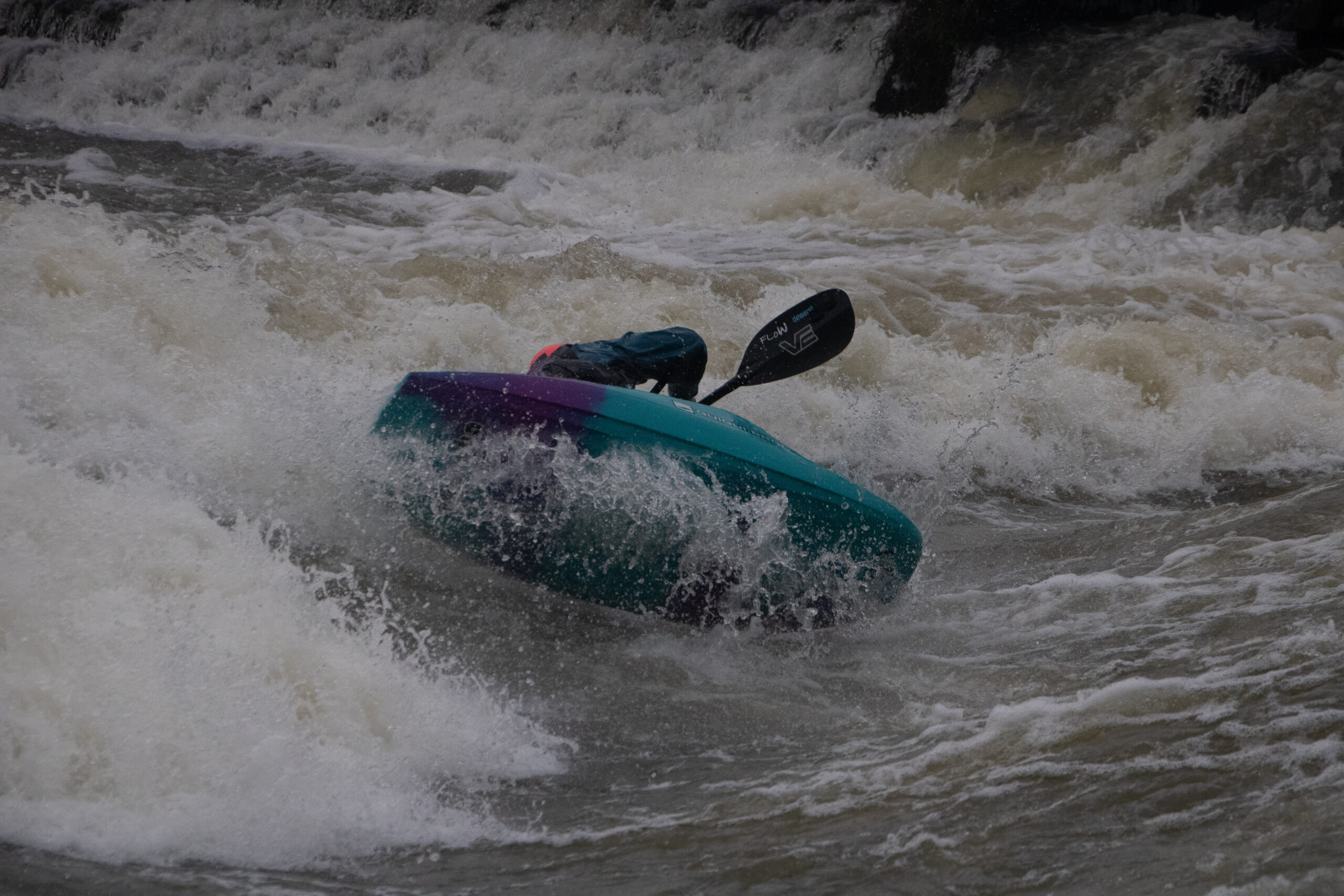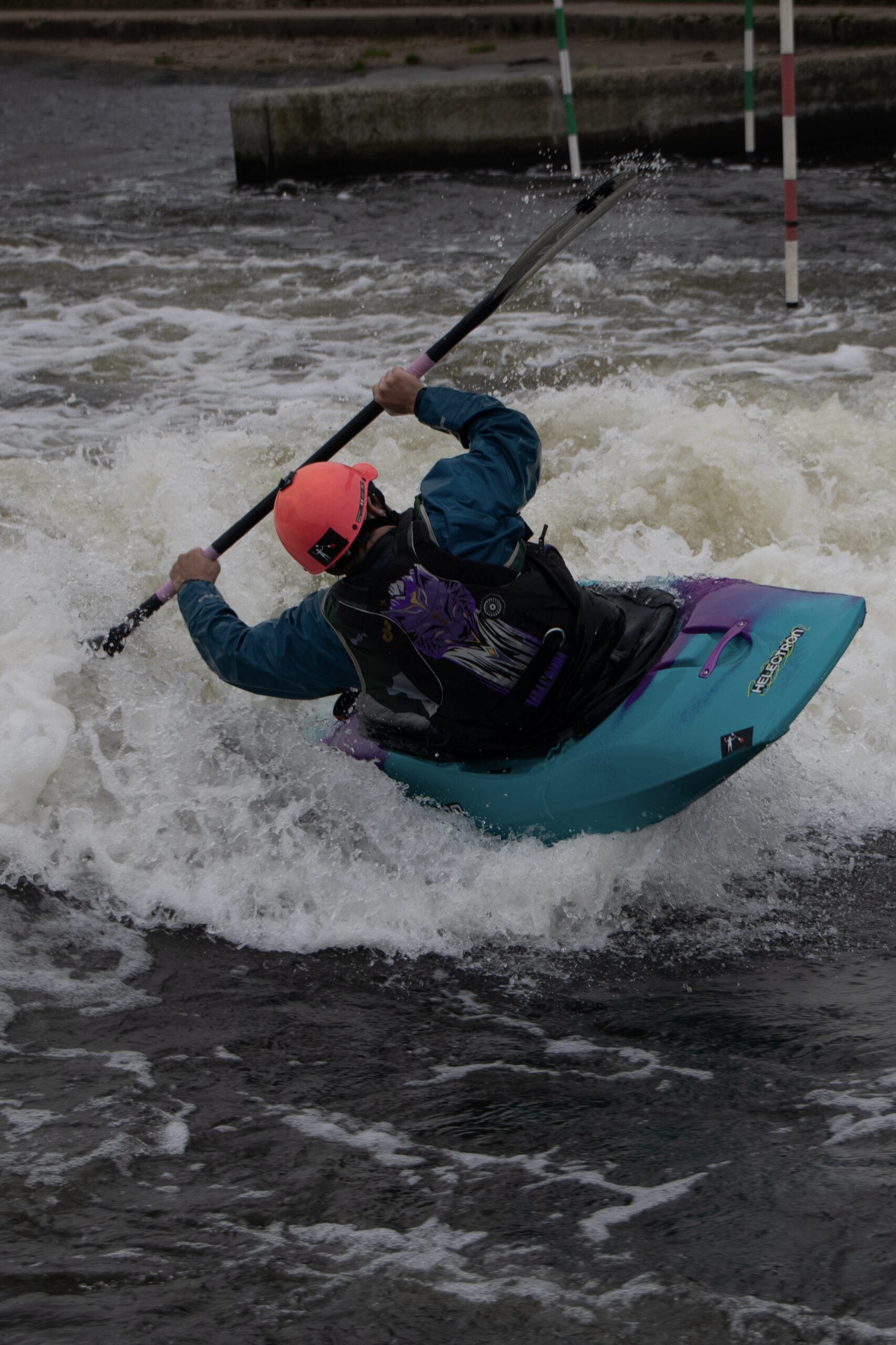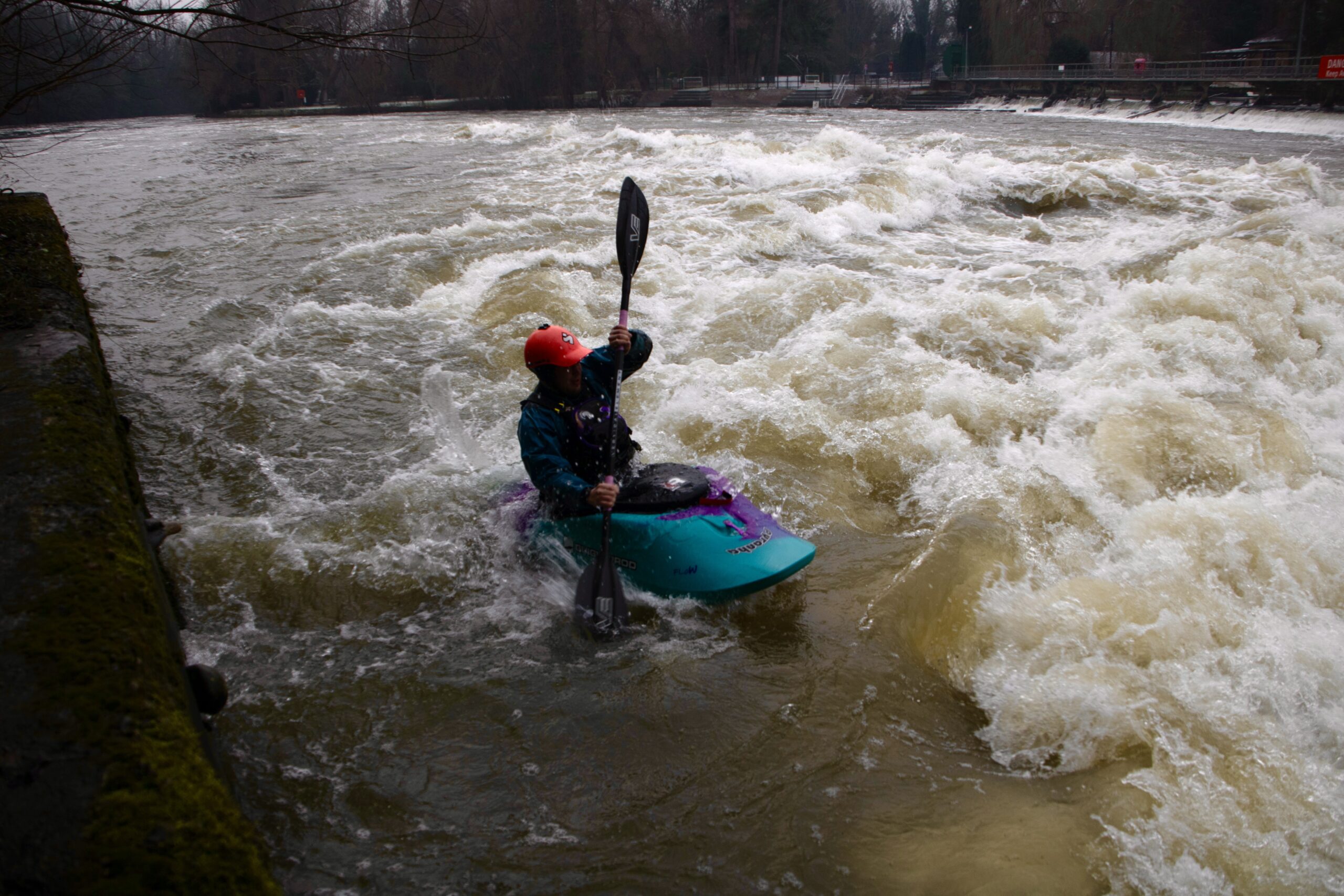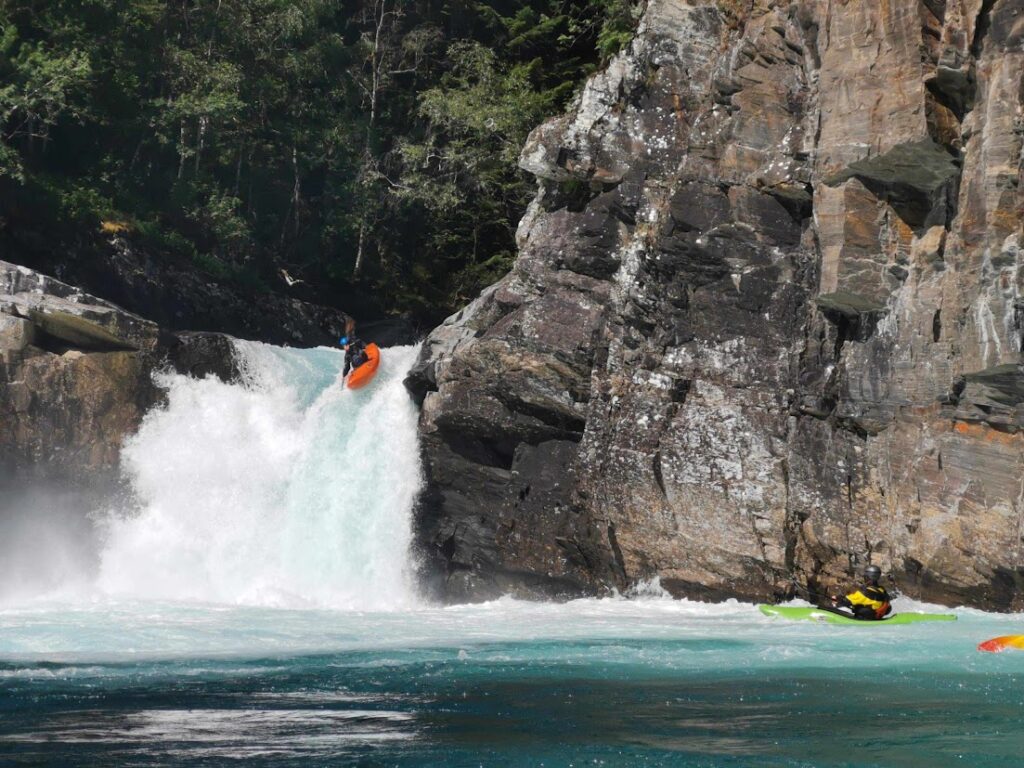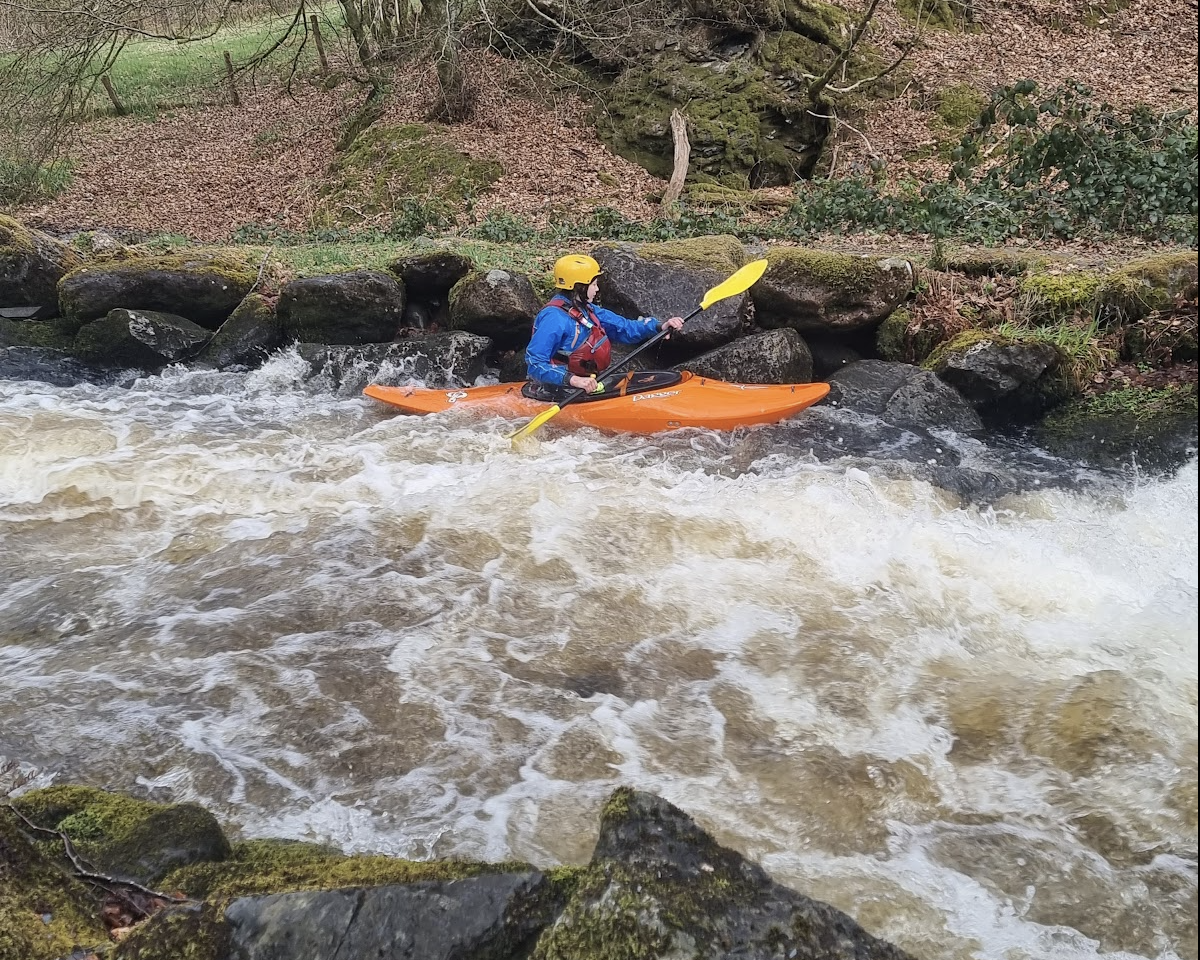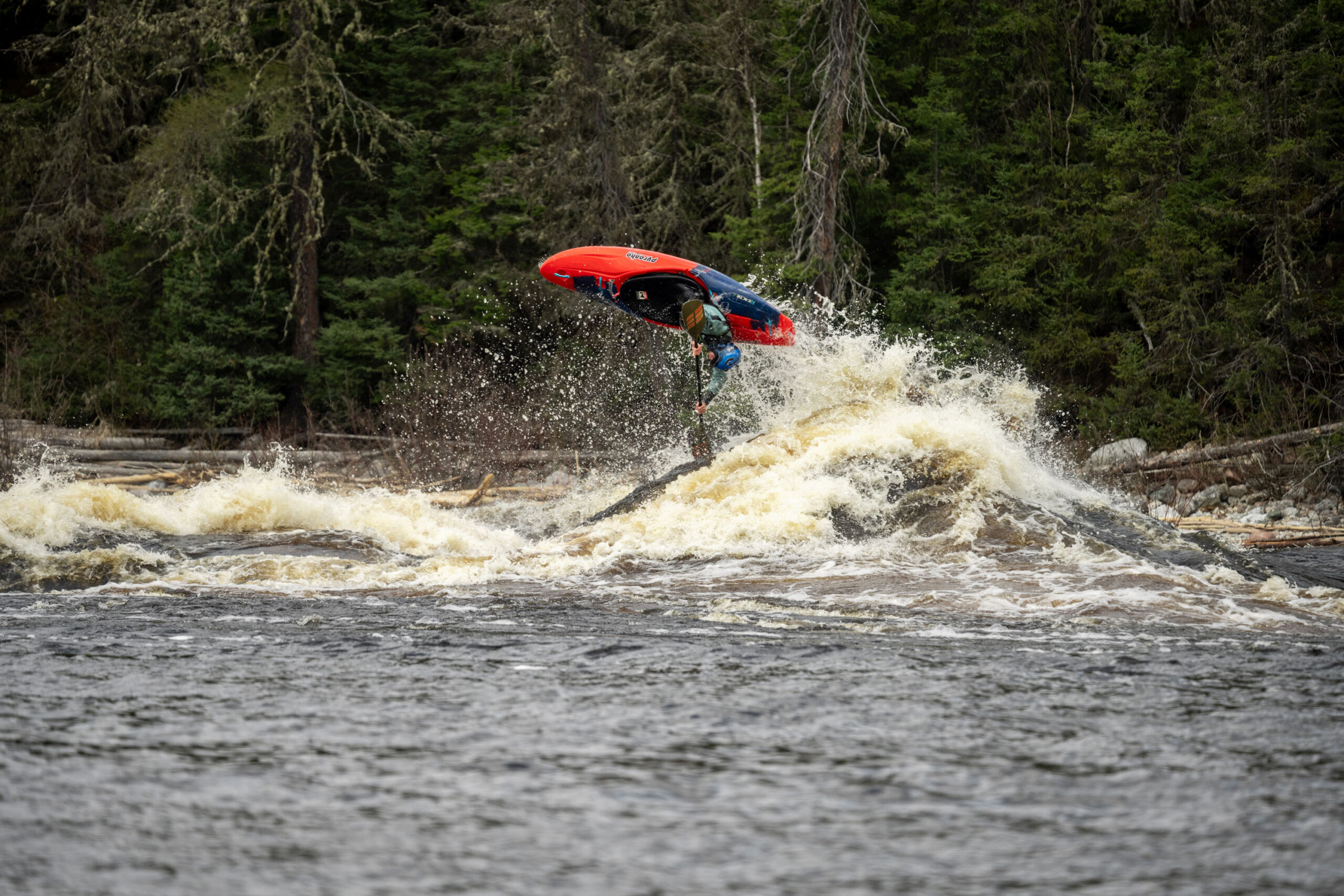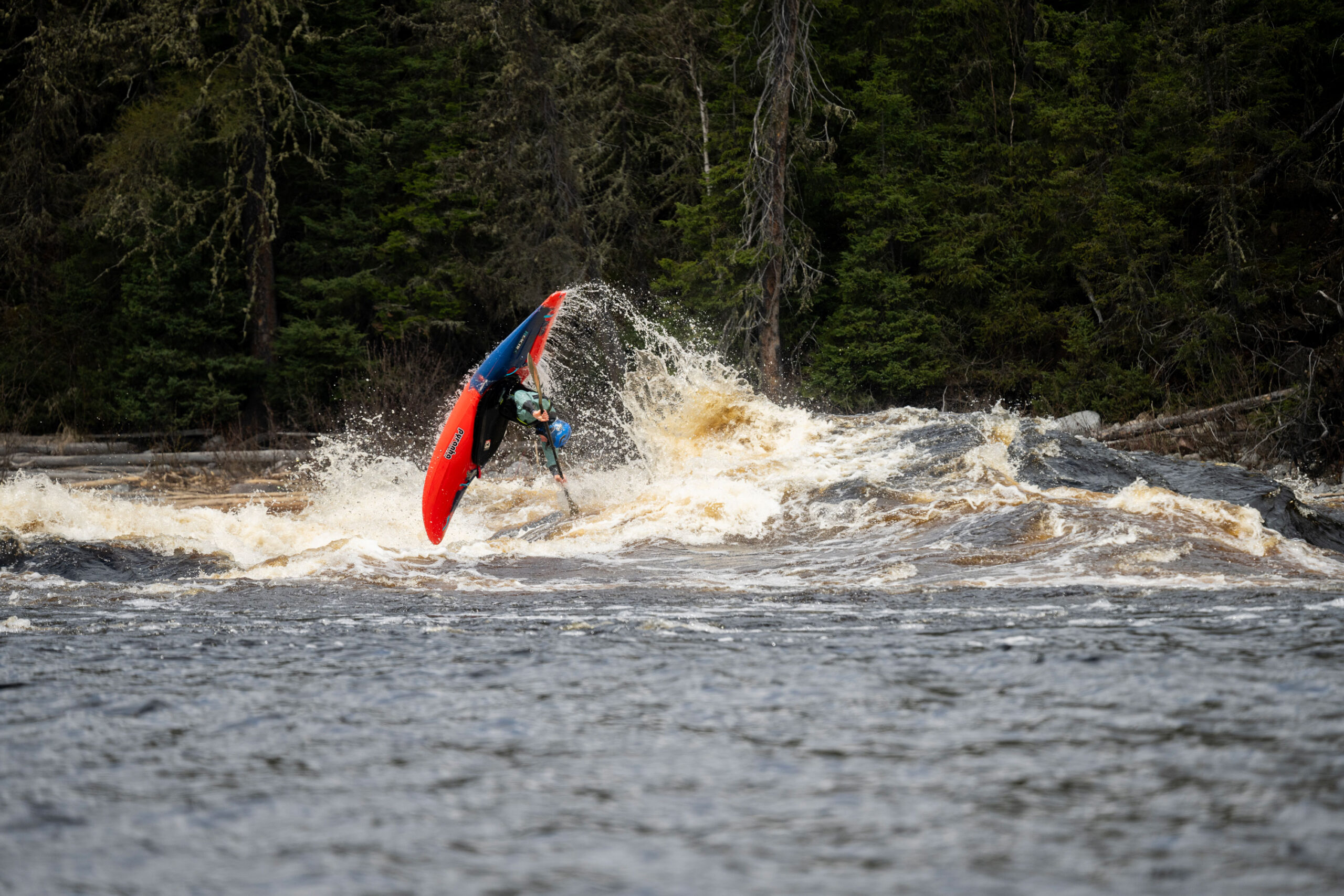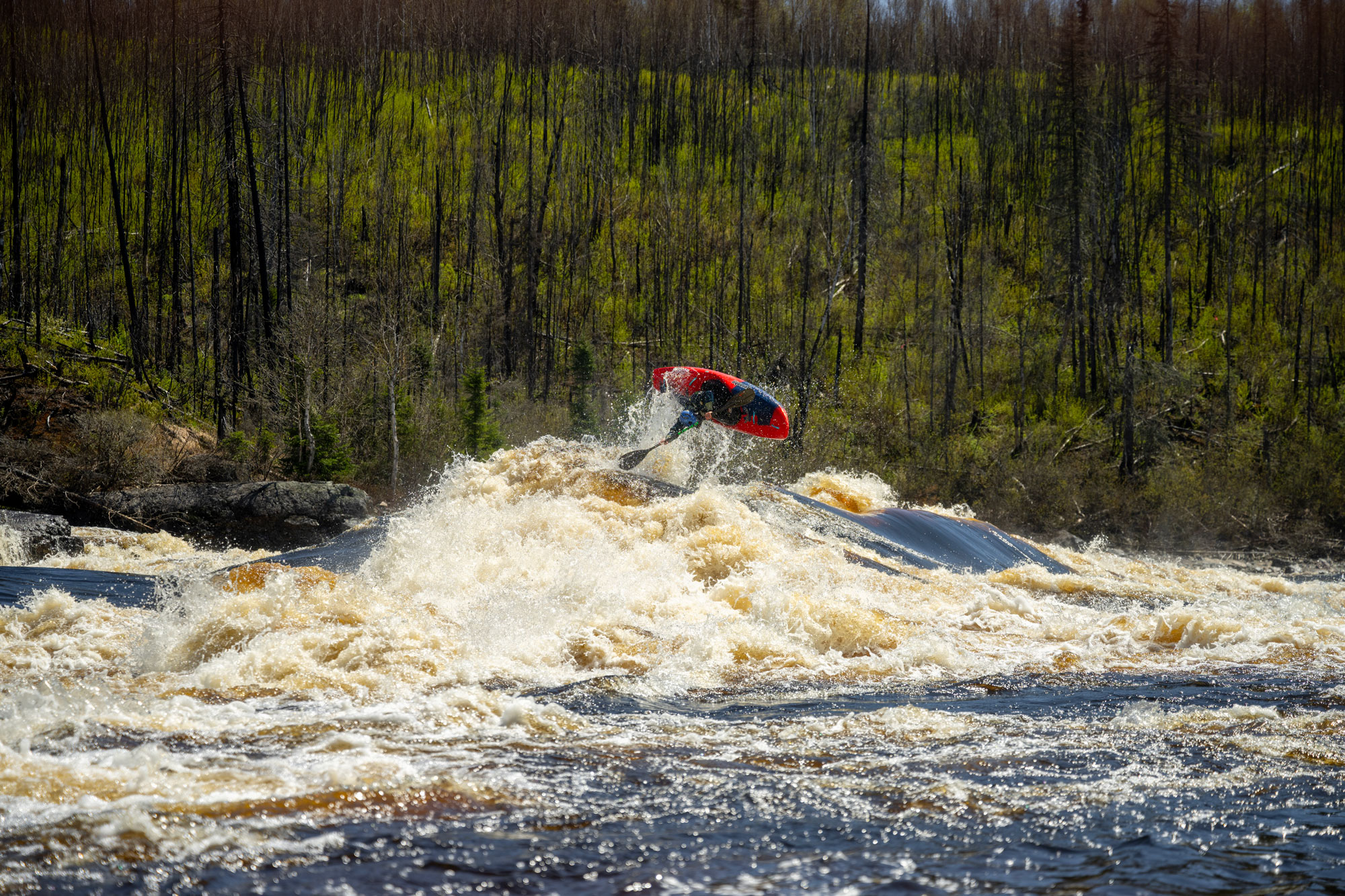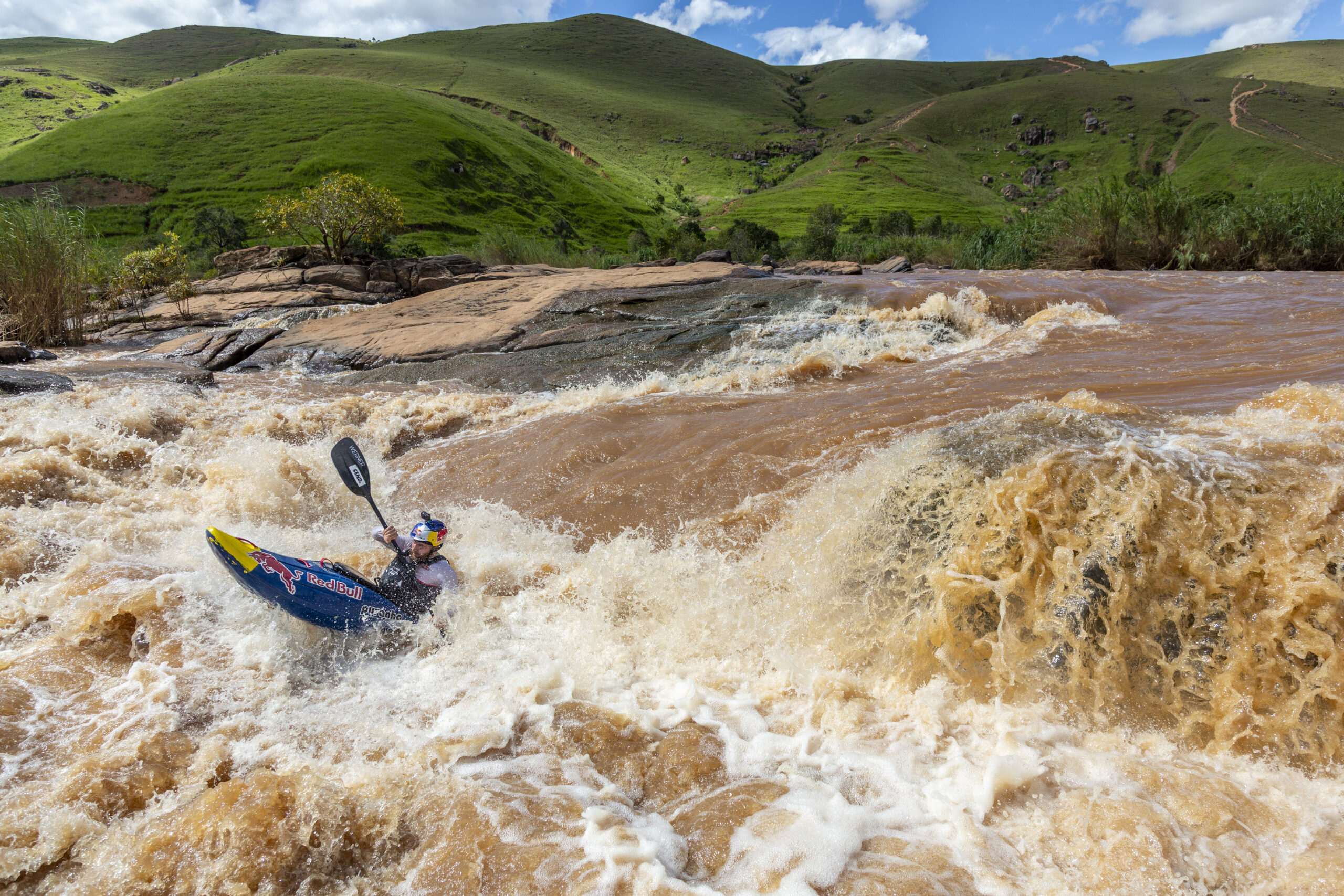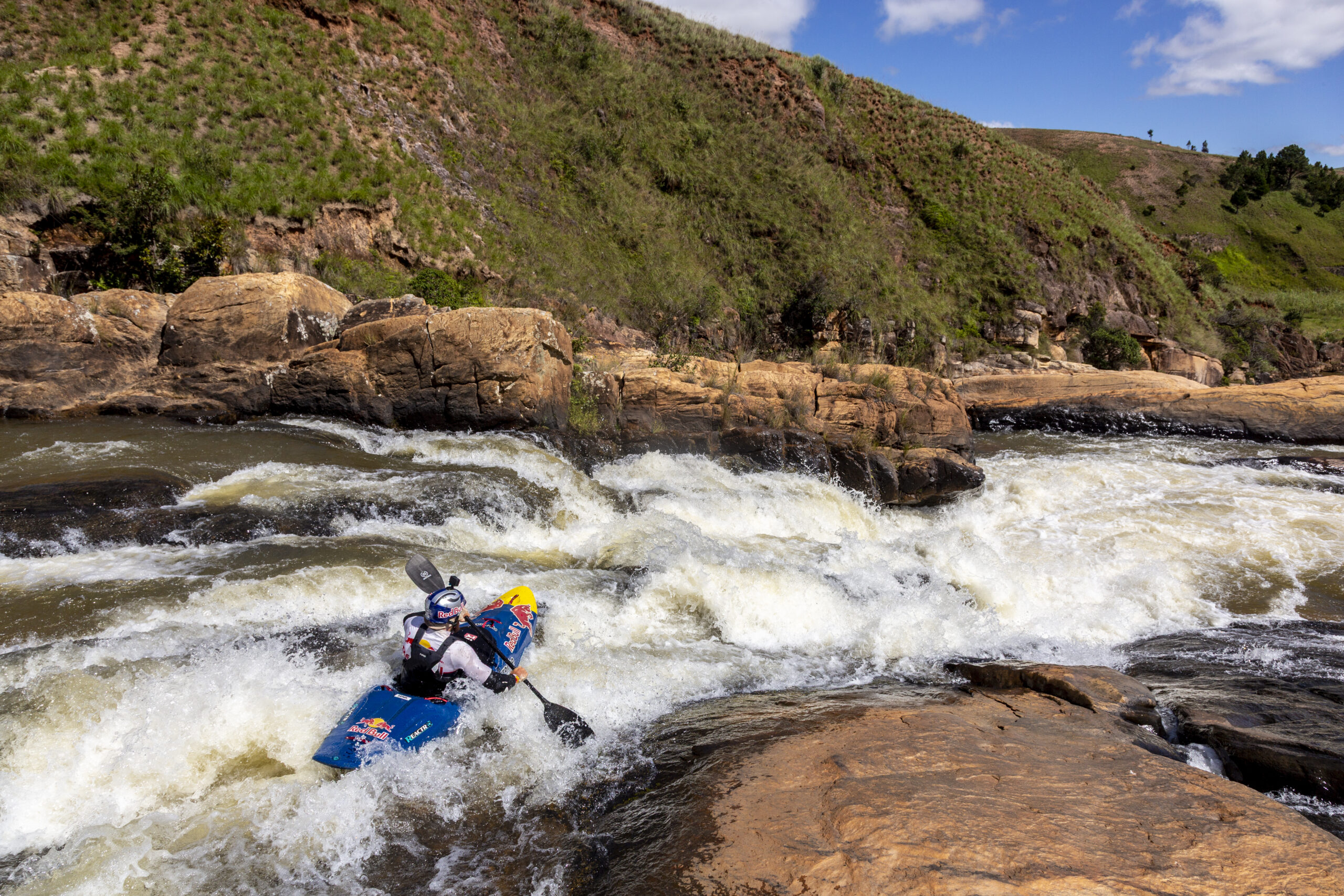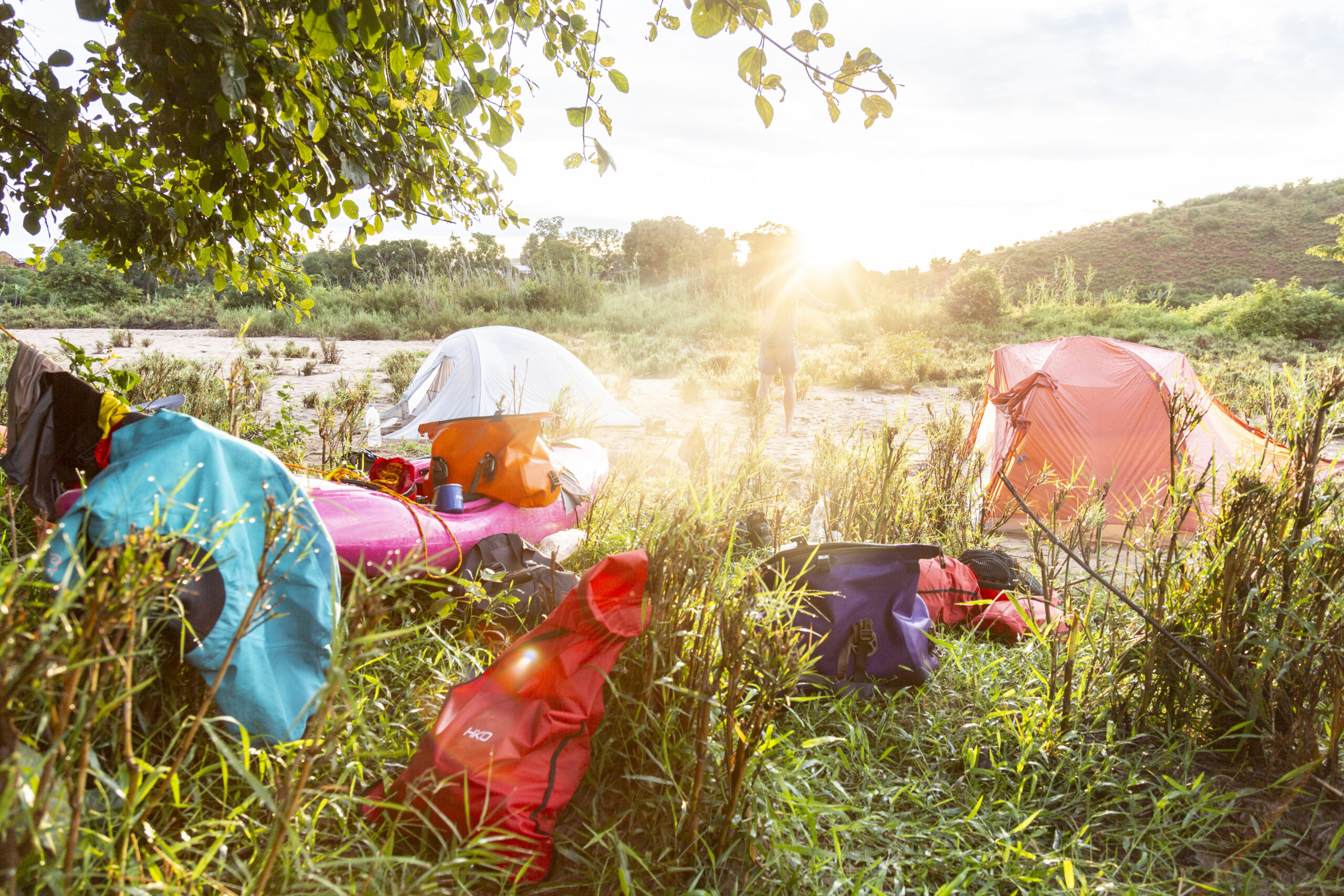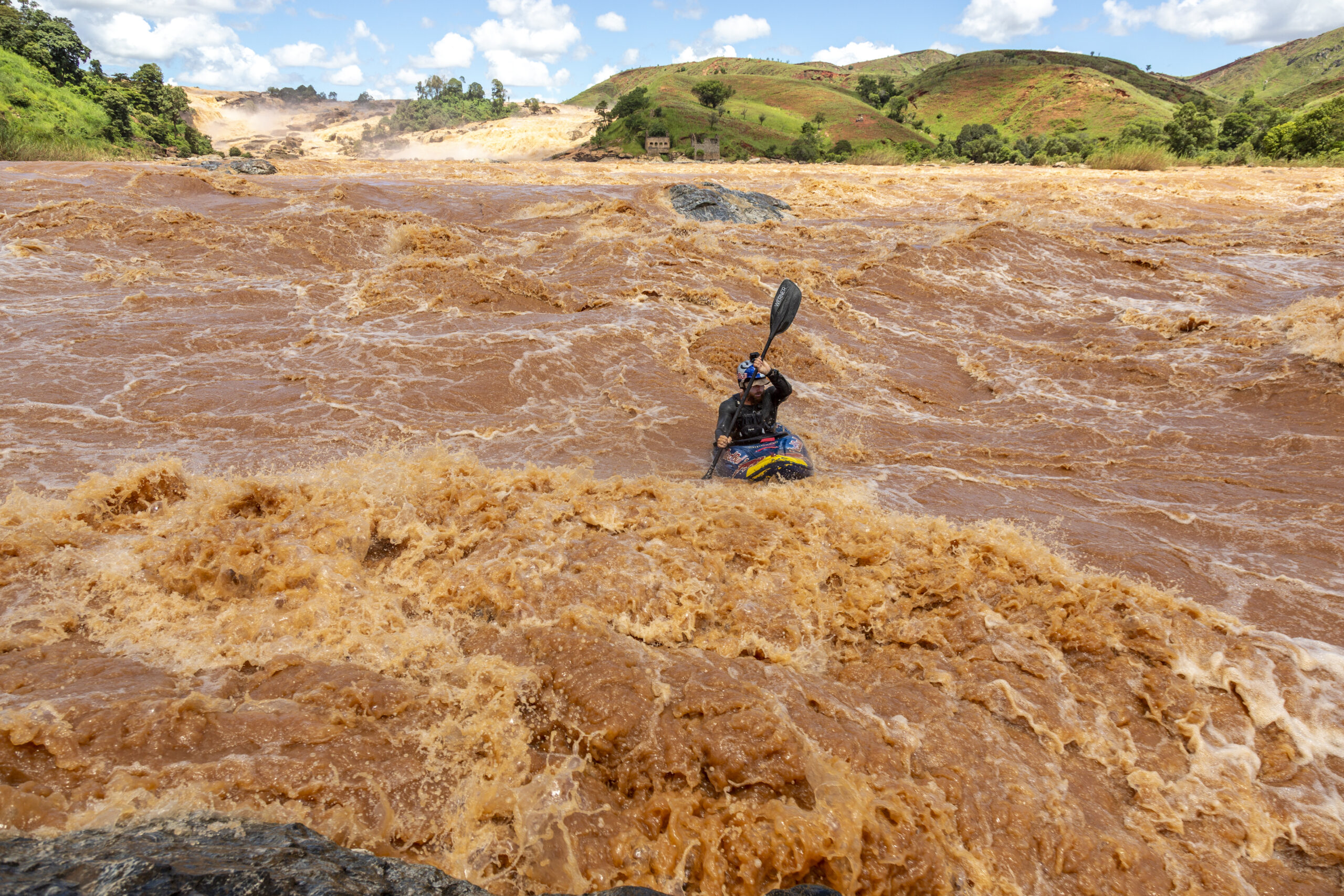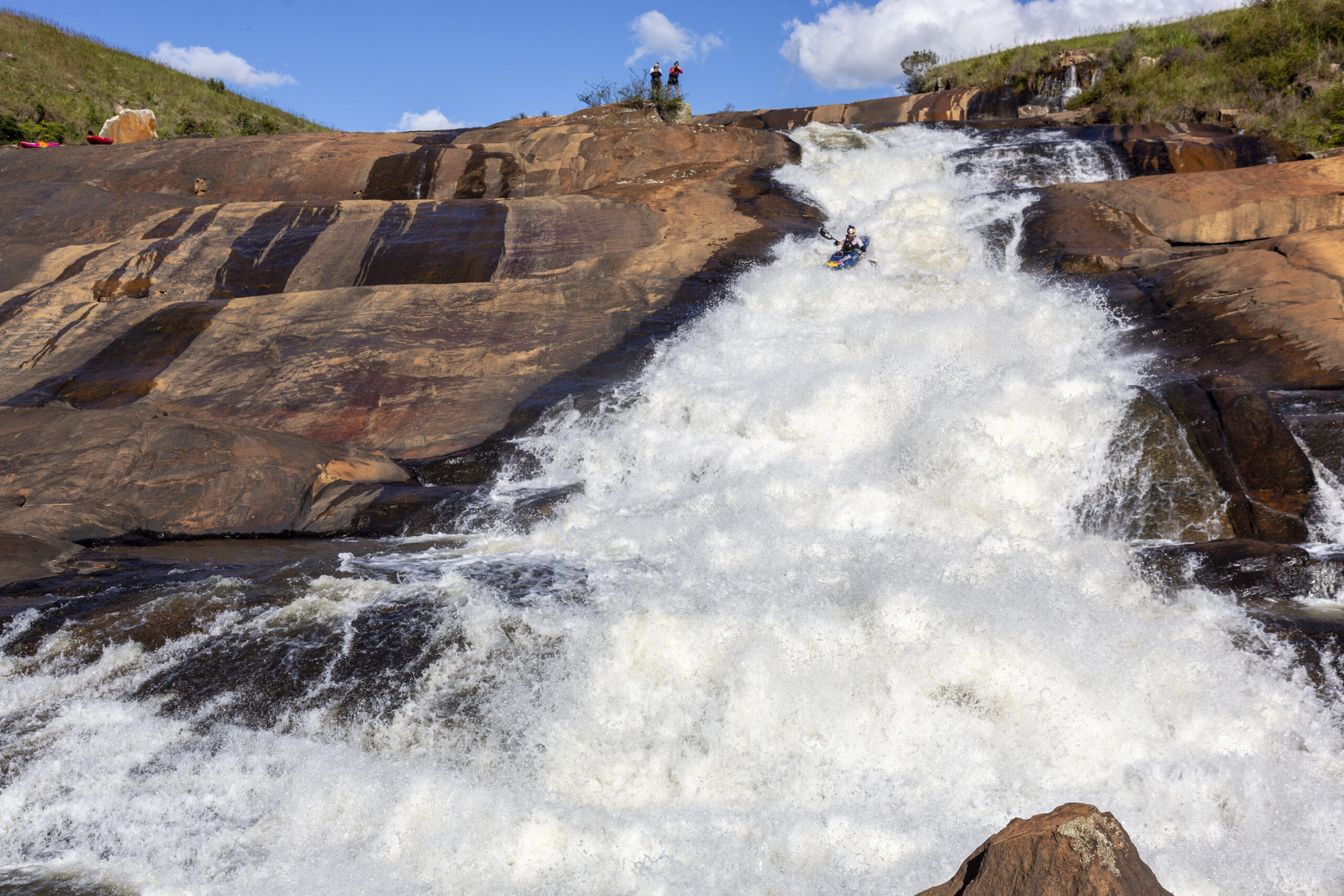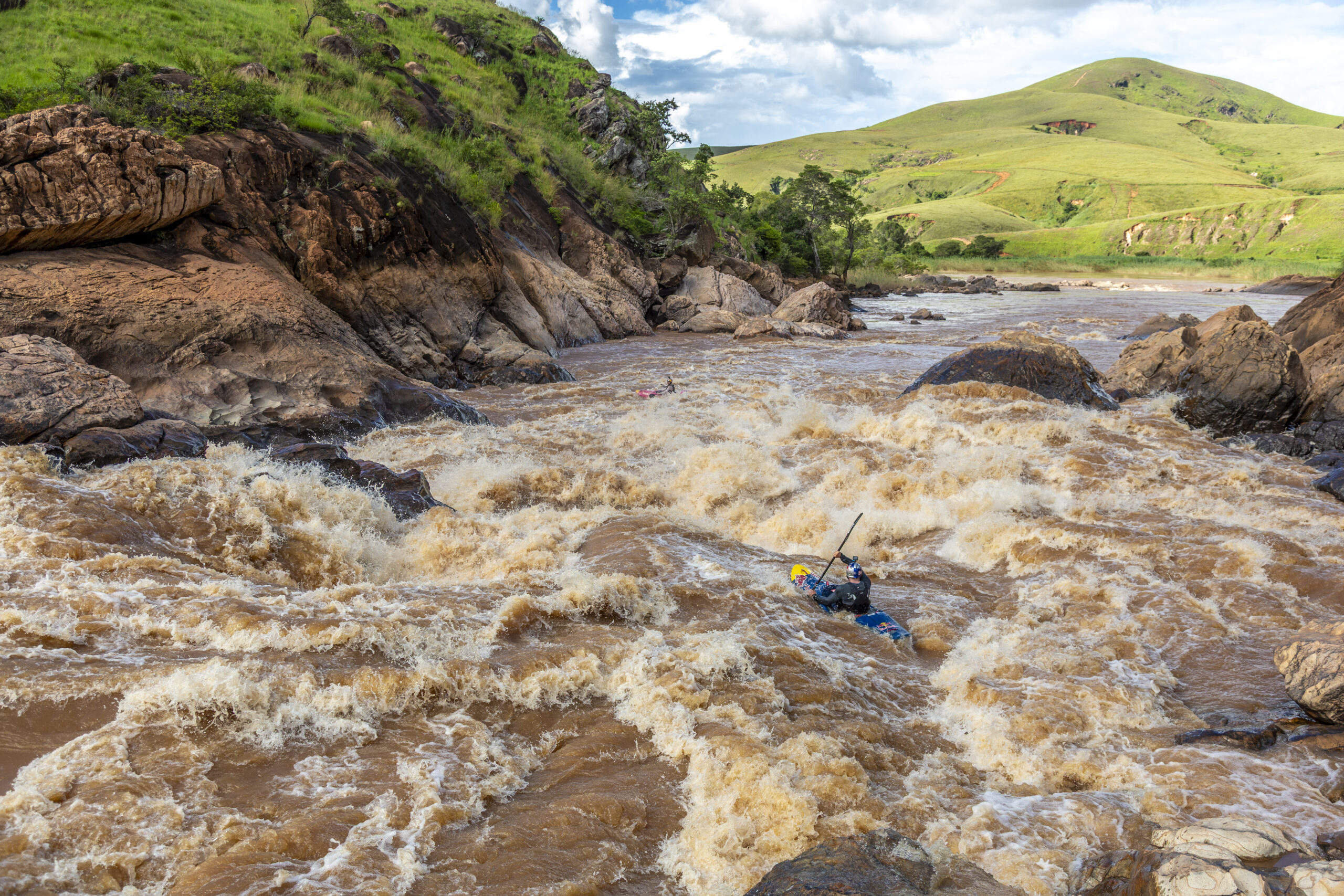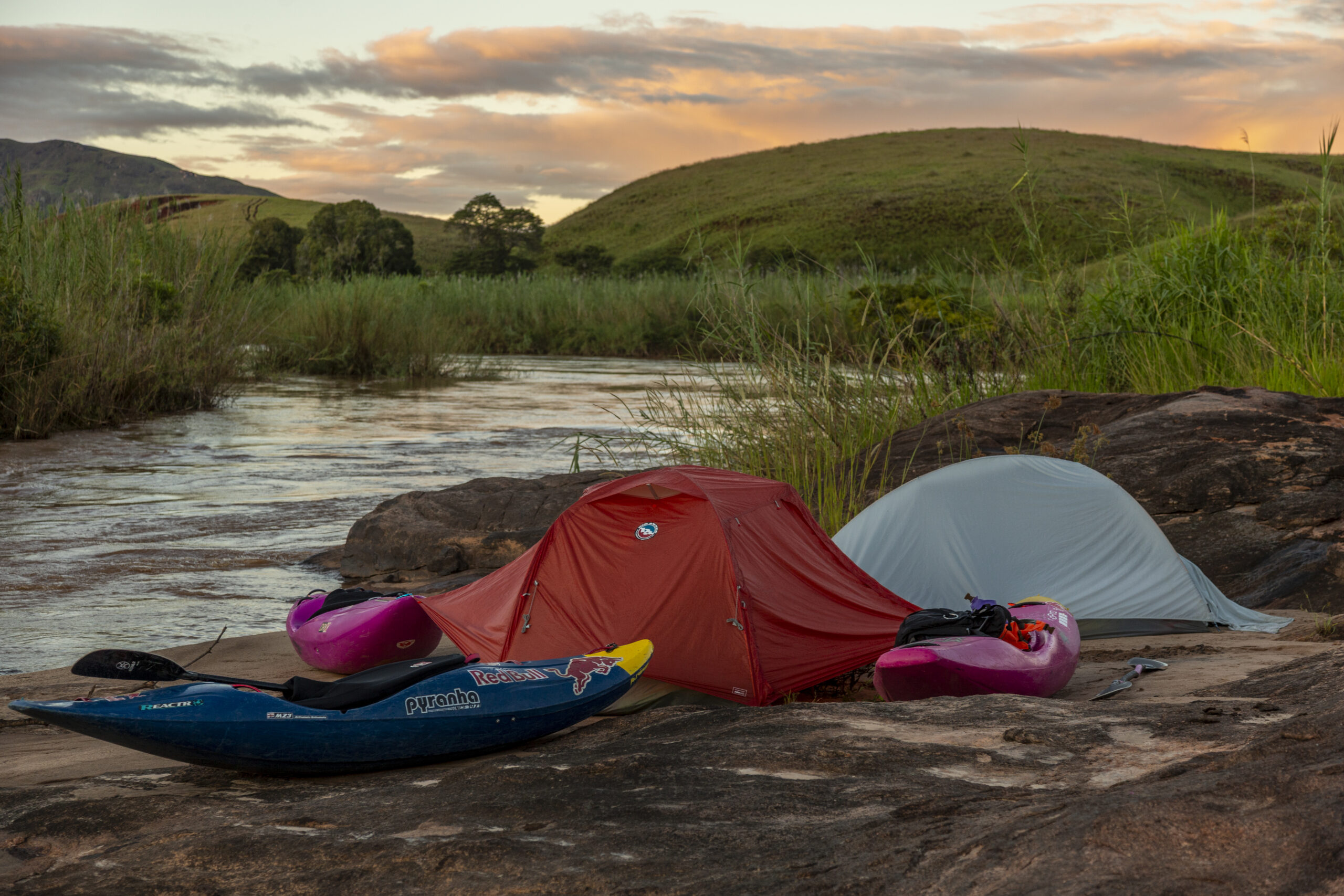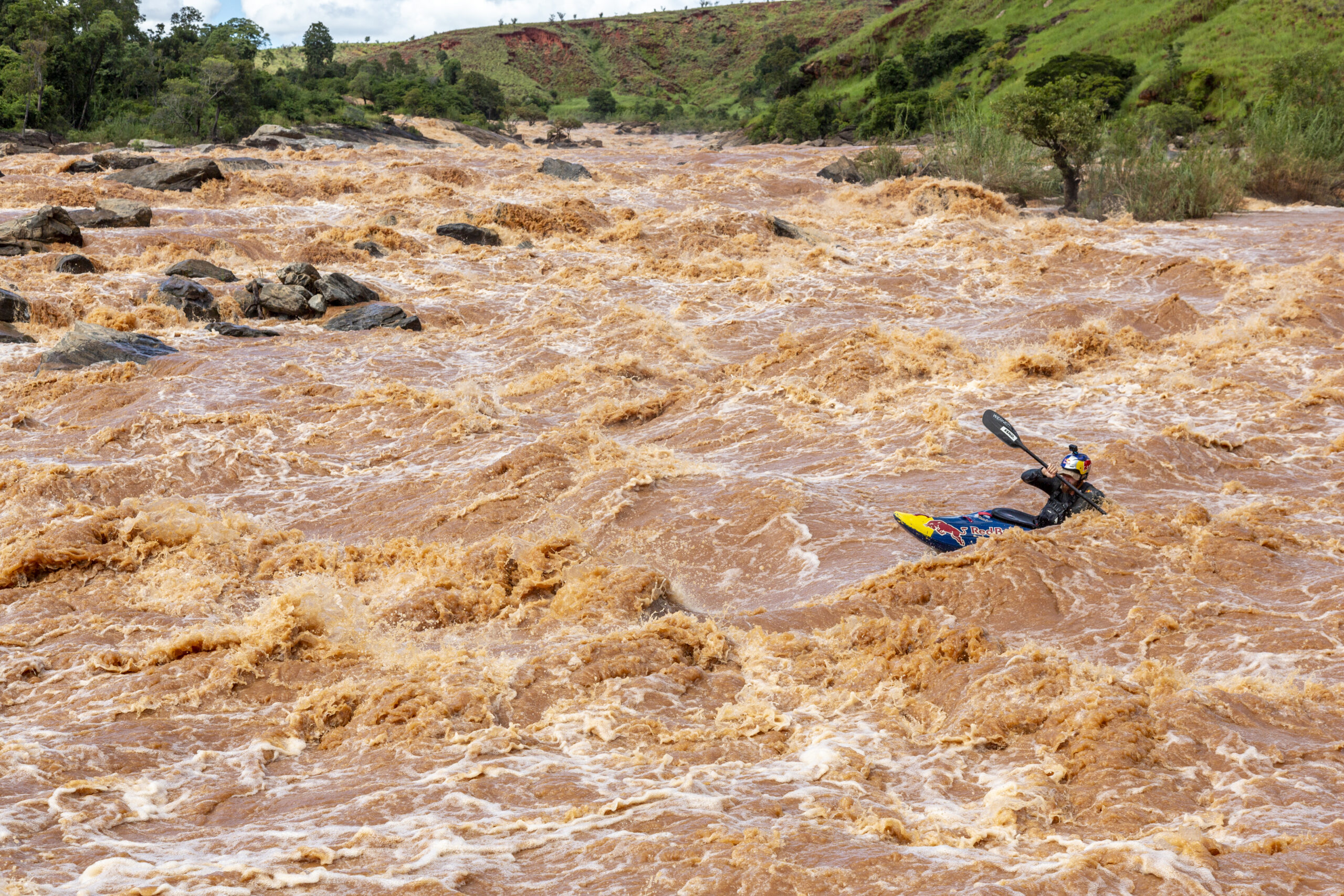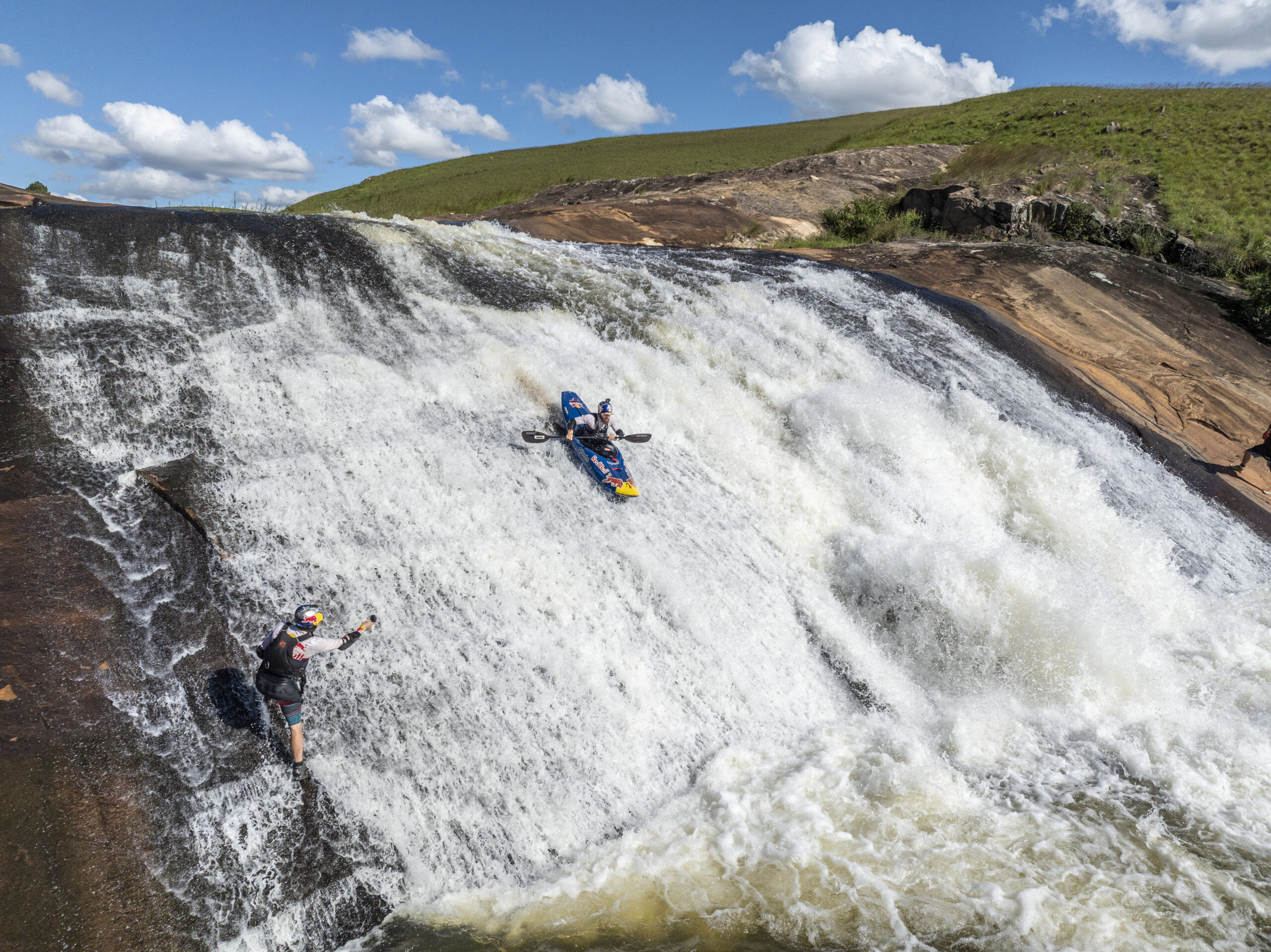‘Todo’, that’s what all the big kids call it. It definitely makes you seem super cool when you say it. A ‘todo’ simply means ‘top to bottom’, the ‘total’ Raundal, in this case. Starting all the way at the headwaters in Mjoellfjell and running downhill over 40km back into Voss. It’s a kayaker’s dream; blue water, stout rapids, big waterfalls, and deep canyons.
The Raundalselva is usually divided up into 9 sections, all of which have different characteristics. Our aim was to kayak every section in one go using the train from Voss station as our shuttle.
Phil picked me up from Kayak Voss at 7:30am and we headed to meet Riley and Espen to catch the 8:20am train up the Raundal valley. Kayak on a train??? Yep, that’s right! One of the unique selling points of this river is the train line that runs alongside the river which permits (tolerates) us bringing kayaks with us.
Heidi and I taking the train up to Reimegrand back in May.
At 8:20am exactly, the train rolled into Voss station. We boarded and were met by a slightly confused conductor who was intrigued to hear about our plan. After stopping at Urdland to pick Helge up, we pulled into Mjoellfjell station: the top of the Raundalselva.
Suited up, I walked down towards the first rapid of the day, Tunnel Drop. This infamous 100m long slide is what most think of when they think of kayaking in Voss. I was the only one keen to run it this time, but everybody was happy to set safety cover. I splashed water in my face and pulled out of the eddy and down into the darkness. After a sweet line, we regrouped and began our descent down the first section of the river.
The view into ‘Tunnel Drop’ from my head cam.
The rest of the first section was beautiful and exposed, open mountain scenery mixed with set piece class 4 rapids all the way to ‘Nosebreaker’. It allowed us to really take in our surroundings and enjoy the sunshine. Oh, how lucky we are!
This section does not exactly fizzle out, with the final rapid, comfortingly called Nosebreaker, blocking our gateway down to the next part of the river. This 15m waterfall is one of the most technically challenging moves in Voss. You need to be purposeful and trust the stroke for this one.
Be Purposeful, pull hard, and trust the stroke! ‘Nosebreaker’
Fired up from having the line that I visualised, I set boat safety for the others. Luckily, I was prepared, as Espen broke his paddles on landing and swam, swiftly followed by Riley, who managed to do a backflip down the drop and was ripped out of his boat. I’m not sure anyone could repeat that if they tried!
After picking up the pieces, we got back into a flow as a team, scouting and portaging where necessary all the way down to Reimegrand. Having all regularly paddled this section, we were able to apply ‘team downstream’ principles; looking behind to check on the person behind you whilst reading and running through without stopping.
On approach to the ‘Cali Slides’, we stopped for lunch, taking in the sun and reminiscing about the whitewater we had already paddled. Continuing in our boogie-team downstream style we boosted all the way down and through the next checkpoint, the beginning of Skytebane- ‘shooting range’ section.
Lunch at ‘Cali Slides’. Left to right Espen, Riley, Helge, and Phil.
The next major feature for us to think about is called ‘Timber Hole’; this two tiered drop is powerful and extremely retentive at certain flows. I was considering scouting, but with a grin, Riley persuaded me that the main hole was open and there was no need to look. On reflection, I’m not sure why I believed a man who had just accidentally gainered a kayak off of Nosebreaker, but there we go.
Conveniently for all of us, the bottom hole was almost open, so no kayakers were claimed that day.
‘Timber Hole’ photographed in the Spring by Rhys Thomson.
Out of the flames, we relaxed and floated down the rest of Skytebane and down to play run. This beautiful class 3 fun section is guarded by a drop known as Bofossen; a 5m collapsed dam with a punchy hole in the centre and kicker on the right.
‘Dropping into Bofossen’
Play run was much needed respite, and was a beautiful reminder of how varied kayaking in Voss can be. This town has a reputation for just class 5 smash and grab kayaking, but it has many accessible and fun sections for the class 3/4 kayaker as well. Next came the V Canyon portage; whilst only 1km long, it requires a walk from river level all the way up to the road, and then all the way back down to the Marine canyon. Warm and unpleasant, we were glad to be back on the water at the top of Marine.
With 6 sections down and 3 to go, we were tired and stoked. We puckered up and dropped into the canyon. This is known, alongside the Lower Myrk, as the best section of whitewater in Voss. Crisp class 5 kayaking in a deep and committing canyon.
One of many incredible moves in ‘Marine Canyon’.
Flying out of every boof, we were motivated and felt controlled, but could all feel the fatigue hitting. The paddle out through Bjorke was slow and tiring but every stroke we took was one step closer to our next challenge, the final whitewater section of the Raundalselva, ‘Vetlehelvetet’, or in English, ‘Little Hell’.
Jasper Polak on the Marine Canyon waterfall, captured by Helge Martisen.
We approached with caution; none of us were comfortable with the lines, and we knew how committing this section was going to be. Boily and pushy, we read and ran our way through this surprisingly stout little canyon and made it out into the blue waters of the Vosso. We had done it. Now on the Vosso, we could paddle out to the lake and back around to the car park by the train station. Exhausted, we all agreed that it was the biggest kayaking day we had done in a long time.
Kayaking out onto Vangsvatnet, nearly back to the train station.
Over burritos, we reflected on the day: 9 sections of some of the world’s best whitewater, snow capped mountains, drinkable, clear water, and good mates… and all accessible with a £5 train ticket.
Takk for Turen x
